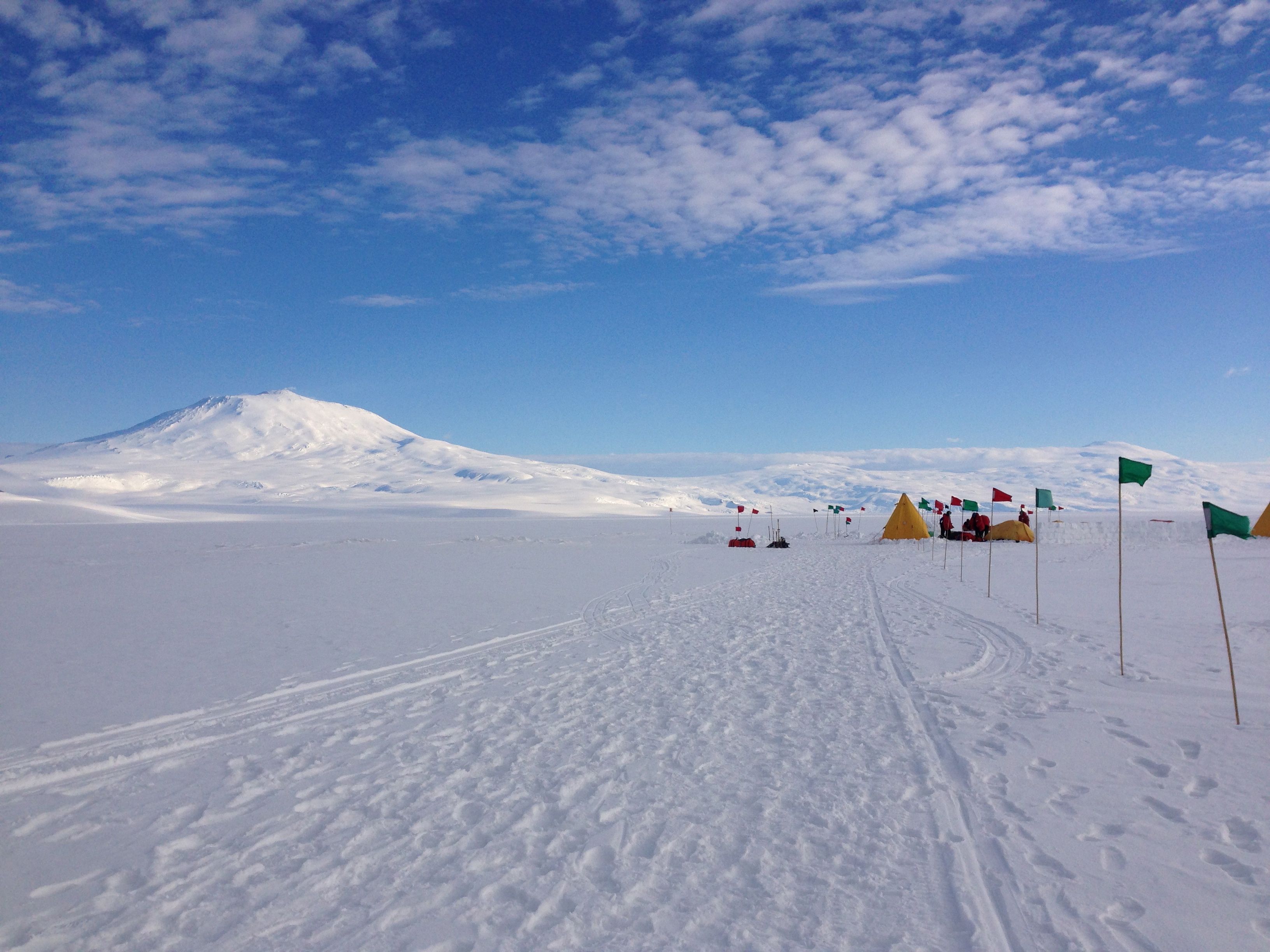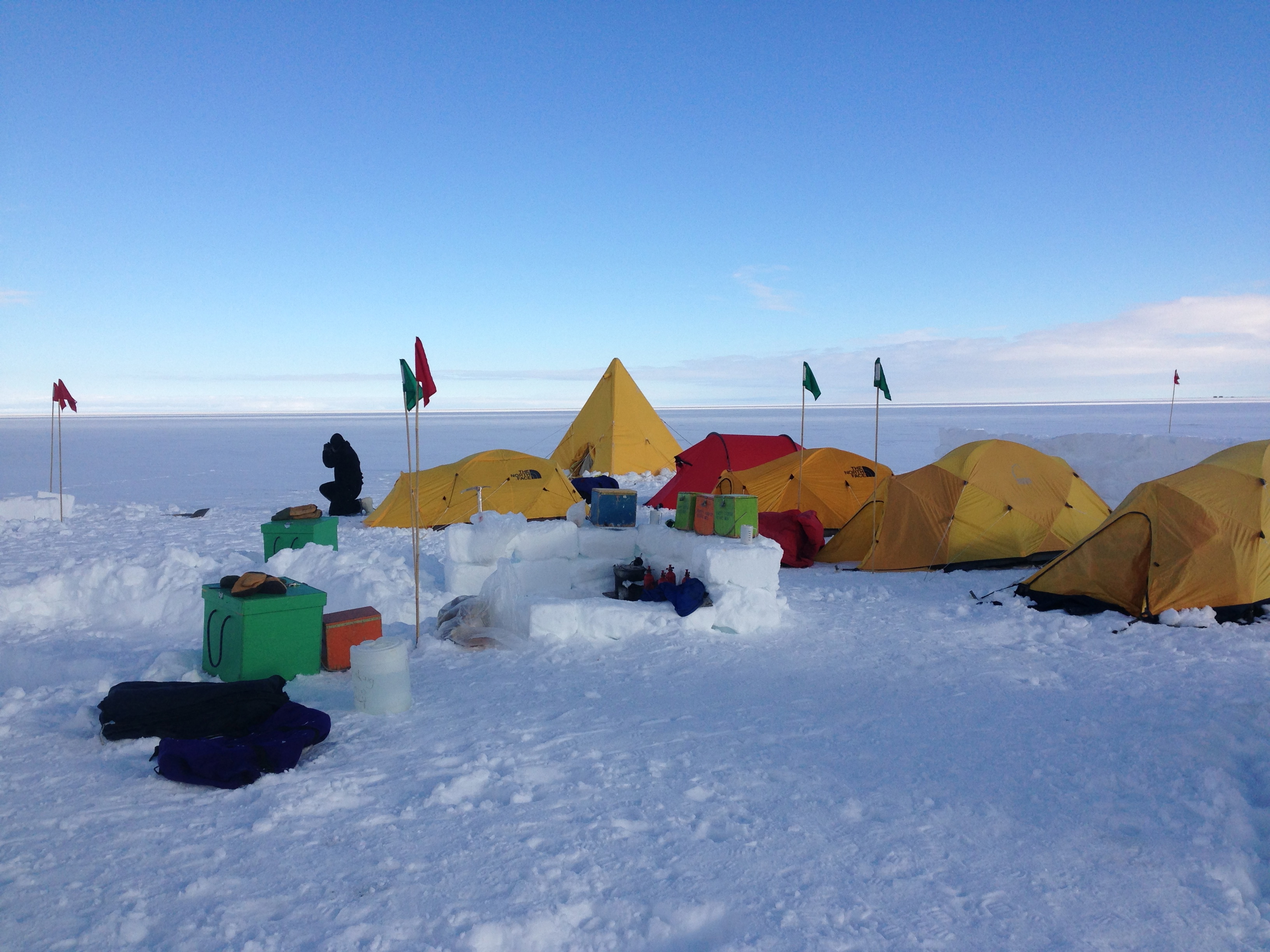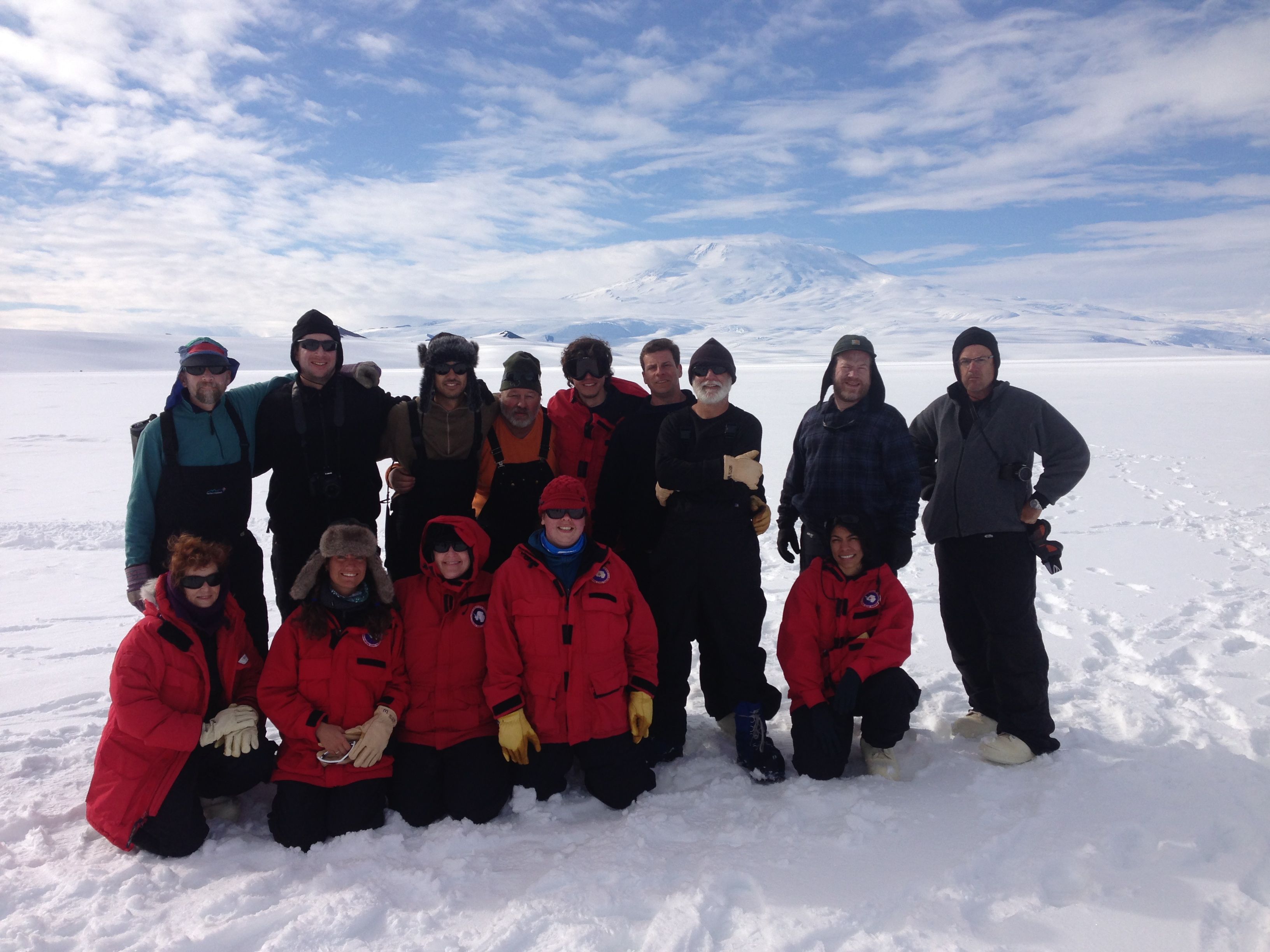Not everyone who arrives in Antarctica has had cold-weathercamp experience, or training in risk assessment and safety when workingoutdoors in extreme weather conditions. And the US Antarctic Program has its own procedures (and harsherconditions) for outdoor safety. Soanyone doing field work is required to take “Snowcraft I” training,colloquially called “Happy Camper,” before being cleared for fielddeployments.
While the Icebreaker team all reached McMurdo Station byJanuary 7, our instruments and equipment were still in Christchurch, due to thesame flight backlog that delayed our deployment south. So we hurried to take the January 8-9class while waiting for our project gear to arrive (it showed up onSaturday).
We started with two hours of classroom instruction… risk assessment, clothing choices,weather hazards, and recognizing hypothermia and frostbite symptoms. Then we packed our sleep kits, food, tents,and stoves and headed out on to the Ross Ice Shelf. Wearing our parkas, sunglasses (to avoid snow blindness) andsnow boots. We had lunch at the“I-Hut” and hands-on instruction in camp stove lighting and maintenance. Then grabbed our bags and trudged abouta kilometer away from the I-Hut to a bare expanse of snow.

View looking back at our campsite, with Mt. Erebus in the background.
There we set up camp… initially shown by our instructorshow to set up Scott expedition tents and mountaineering tents, and how to makedeadfalls in the snow to anchor guy lines. And snowcraft… cutting half-meter cubes of snow usingsaws, sledges to pull these to make a meter-high wind wall protecting ourtents. We dug out a kitchen/diningarea, complete with snow benches (foam laid on top, for comfortableseating). And how to dig grave-likesnow trenches, 1.5m deep and wide enough for a person’s sleeping bag. Then… the instructors departed to theI-Hut, and our group of 14 was on its own overnight. It was great! Mt. Erebus in the distance, snow sawing, warm cocoa… half of our group slept in snowstructures they built, including two women who built an igloo and two men whoexcavated an underground snow cavern complete with a small kitchen.

Our camp, including the snow wall (behind tents), kitchen, and dug out snow trenches (below surface). Flags mark trenches and hazards.
The next morning, we took down our camp and were ready forthe 8:30am return of our instructors. We went back to the I-Hut and studied VHF and HF radio operations andprotocols, the contents of survival bags, and ran a couple of emergencyscenarios (my favorite was the white-out search and rescue scenario, when anyone going out had to be ropedand wear a white bucket over their head).

8-9 January 2013 Snowcraft I, “Happy Camper” field safety training class group.
